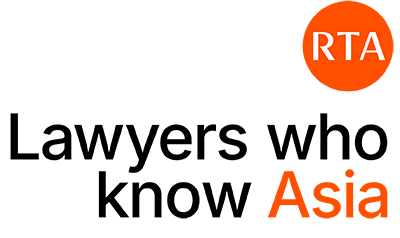Introduction
On 19 September 2025, the Securities Commission Malaysia (“SC“) issued the Guidelines on Social Exchange Platforms (“Guidelines“), introducing a new regulatory framework that paves the way for Malaysia’s first regulated social exchange for fundraising.
The Guidelines mark the culmination of the SC’s broader efforts to formalise social finance in Malaysia, following the Social Exchange Pilot Programme (SEPP25) announced in January 2025, under which five non-governmental organisations (“NGOs“) were selected to test fundraising, impact reporting, and governance processes. That pilot was positioned as a precursor to a fully regulated platform, and the new Guidelines now translate those learnings into law.
The SC has already published eight prescribed forms and an accompanying submission checklist for operators – ranging from applications for registration to notices of cessation – signalling that the regulator stands ready to receive applications in short order.
Overview of the Guidelines
A Social Exchange Platform (“SEP“) functions as an online platform that facilitates fundraising by non-profit organisations (“NPOs“) for social impact projects. The regime aims to provide donors and the public with greater transparency and accountability in how social funds are mobilised and utilised.
Under the Guidelines, no person may use the name or hold themselves out as operating an SEP unless duly registered with the SC. The Guidelines therefore introduce a new regulated category distinct from Recognised Market Operators (“RMOs“) such as equity crowdfunding (“ECF“) or peer-to-peer (“P2P“) lending platforms.
Registration and Governance Requirements
Operators must obtain the SC’s prior approval and satisfy stringent requirements reflecting the same governance and risk standards expected of capital-market intermediaries.
Key registration criteria include:
- incorporation in Malaysia and local operational presence;
- fit-and-proper status of the applicant, directors, controllers, and responsible persons;
- sound risk management and operational systems;
- a minimum paid-up capital of RM500,000, with at least RM500,000 maintained as shareholders’ funds at all times; and
- appropriate security and data-protection arrangements proportionate to the scale and risks of the business.
These thresholds indicate that only well-capitalised, professionally run entities will qualify as SEP Operators. SEP Operators are also required to perform robust due diligence on participating NPOs and their projects, including anti-money-laundering (AML) checks, verification of eligibility, and assessments of project feasibility. SEPs are also required to ensure they have systems which facilitate direct payment of funds from donors to the NPO through the SEP, ensure fair treatment of donors and NPOs, and monitor the utilisation of funds raised by the NPO in accordance with disclosures. In effect, SEP Operators will serve as both gatekeepers and guardians, ensuring the integrity of campaigns listed on their platforms.
Eligible Organisations and Social Impact Projects
Fundraising on an SEP is restricted to NPOs that satisfy specific eligibility criteria and whose projects fall within one of these three categories:
- Social Welfare
- Cultural Preservation and Heritage
- Environmental Sustainability and Conservation
Other eligibility criteria favour larger, more established NPOs. NPOs must be Malaysian-incorporated as: (i) a company limited by guarantee; (ii) a registered society; or (iii) a registered trustee company, and registered with the Inland Revenue Board of Malaysia under section 44(6) of the Income Tax Act 1967. NPOs are also required to have an operational track record of three years, with at least 70% of activities relating to social impact projects, minimum numbers of employees, and minimum annual spending and funding of RM100,000 and RM10,000, respectively, over the preceding three years before being permitted to raise funds through an SEP Operator.
Each approved project may raise funds only for a defined period of up to five years, and no more than 20% of the funds raised may be used for operating expenses. At least 80% must directly support project implementation. The permitted 20% portion can cover platform fees, legal or professional costs, and impact-verification expenses.
Transparency obligations are extensive: NPOs must provide detailed disclosures of project objectives, budgets, governance, and reporting frameworks, which the SEP Operator must then publish on its platform. This creates a level of disclosure akin to a capital-market offering, adapted to the philanthropic context.
Why Regulate Social Fundraising Under the Capital Markets Framework?
Historically, the SC’s remit has centred on fundraising activities involving a financial return, such as ECF and P2P lending, both regulated under the RMO framework. Donation-based crowdfunding, however, has remained unregulated, even as platforms like GoFundMe and other local sites gained prominence.
The introduction of the SEP regime potentially addresses a regulatory gap, grounded in three possible policy considerations:
- Nature of Funds Mobilised
Social fundraising platforms handle public monies at scale. Although donors do not expect a return, the aggregation and movement of funds through online intermediaries raise similar concerns of fiduciary integrity, misuse, and governance as investment platforms.
- Public-Interest Oversight
Without regulatory oversight, donation platforms are vulnerable to fraudulent campaigns and misuse of donations. The Guidelines impose fit-and-proper and reporting standards to protect donors and beneficiaries, bringing transparency to the flow of social funds.
- Closing the Regulatory Gap
While the NPOs are regulated entities under their respective laws of incorporation, such regulatory bodies do not oversee fundraising intermediaries. The SC’s jurisdiction here focuses on the fundraising activity itself, providing a clear regulatory space for social exchanges that intermediate public funds.
Implications for Existing and Foreign Donation Platforms
One of the more practical questions arising is how the Guidelines will affect existing or foreign platforms, particularly those similar to GoFundMe that host a wide range of personal fundraising campaigns (e.g. “fund my cancer treatment” or “support a search for my missing child”), or even grassroot-led organisations which fund time-sensitive aid events (e.g. a response to a major flood event or other climate-led disaster, wars, or famine).
The Guidelines capture any platform that facilitates public fundraising for social or charitable causes within Malaysia, and where the operator “holds itself out” as an operator of a “social exchange platform” in Malaysia. This raises several important implications:
- Local presence or targeting matters: Offshore platforms that actively solicit Malaysian donors or NPOs, or list campaigns by Malaysian residents, may come within the SC’s supervisory purview.
Personal fundraising may fall outside scope: Campaigns by individuals for personal needs may not meet the definition of an NPO or social impact project, which is limited to structured entities carrying out work in the specified categories within Malaysia. However, where a platform indiscriminately hosts both charitable and personal causes, the SC could require registration or restrict its access to the Malaysian public.
- Potential extraterritorial reach: Clarifications on how the Guidelines apply to foreign-based platforms or cross-border fund flows may be required. Until then, operators targeting Malaysian donors or NPOs with qualifying social impact projects should exercise caution and consider seeking legal advice on whether they fall within the regime’s ambit.
This aspect of the Guidelines introduces regulatory grey zones that could affect both established global donation sites and domestic platforms currently operating without oversight.
Benefits and Challenges
The Guidelines represent an innovative and timely step towards integrating social finance into Malaysia’s capital-market architecture, particularly against the backdrop of the country’s chairmanship of the Association of Southeast Asian Nations (“ASEAN“) in 2025 under the theme of “Inclusion and Sustainability”. Potential benefits include:
- Enhanced donor confidence: donors may be more willing to contribute through an SC-registered platform, knowing that operators and campaigns are subject to oversight and disclosure requirements;
- Institutional credibility: for qualified NPOs and operators, SC registration may serve as a mark of legitimacy, attracting sustained partnerships with corporate donors, foundations, and Environmental, Social, and Governance (ESG)-aligned investors; and
- Transparency and accountability: detailed reporting obligations will help ensure that funds reach intended beneficiaries and outcomes are measurable.
However, several practical limitations warrant consideration:
- High entry thresholds: the capital, operational and governance requirements may deter smaller or emerging social initiatives that lack formal incorporation or resources to comply;
- Narrow project scope: the Guidelines currently recognise only three categories of social impact. Causes outside these areas, including education, health, or humanitarian relief, may need further policy expansion to participate;
- Administrative burden: continuous verification, reporting, and disclosure obligations could strain smaller NPOs or increase compliance costs, potentially limiting accessibility; and
- Five-year project cap: the framework appears oriented towards medium- to long-term projects rather than short-term or emergency campaigns, potentially excluding time-sensitive fundraising needs.
As a result, while the Guidelines formalise best practices already observed by established NGOs, they may also leave smaller grassroots movements outside the regulated ecosystem – at least in the near term.
Implementation Readiness and Regulatory Outlook
The release of eight prescribed forms together with the Guidelines underscores that the SC is operationally ready to implement the regime. These forms cover matters such as registration, reporting, changes of control, and cessation, indicating that the regulator expects near-term applications from potential operators.
Given Malaysia’s alignment with broader Sustainable Development Goals (SDG) financing and the Islamic social finance agenda, further refinements may follow as the SC assesses feedback from the pilot programme and early applicants. Over time, we may see the framework evolve to include impact-investment hybrids, green sukuk-linked social offerings, or corporate social responsibility (CSR) tie-ins listed on regulated social exchanges.
Concluding Remarks
The issuance of the Guidelines is a groundbreaking development for Malaysia’s social finance landscape. By treating donation-based fundraising with the same regulatory rigour as investment activities, the SC seeks to foster public trust, improve transparency, and institutionalise social giving within a capital-markets framework.
At the same time, several interpretive and operational questions remain, including how the regime applies to foreign or mixed-use platforms, and whether future amendments may widen the scope of eligible social causes.
As Malaysia moves towards launching its first operational social exchange, stakeholders – including NGOs, foundations, digital-platform operators, and potential investors – should closely monitor the SC’s implementation approach and assess readiness to comply.
How We Can Help
Christopher & Lee Ong is closely monitoring the rollout of the SEP framework and its interaction with existing crowdfunding and charitable-fundraising models. Our Fintech & Financial Services Regulatory Practice Group regularly advises on licensing, regulatory engagement, and compliance for both capital-market intermediaries and emerging social-finance structures.
We stand ready to assist prospective SEP Operators, NGOs, and social enterprises in assessing eligibility, preparing applications, and liaising with the SC on registration and operational requirements.
Disclaimer
Rajah & Tann Asia is a network of member firms with local legal practices in Cambodia, Indonesia, Lao PDR, Malaysia, Myanmar, the Philippines, Singapore, Thailand and Vietnam. Our Asian network also includes our regional office in China as well as regional desks focused on Brunei, Japan and South Asia. Member firms are independently constituted and regulated in accordance with relevant local requirements.
The contents of this publication are owned by Rajah & Tann Asia together with each of its member firms and are subject to all relevant protection (including but not limited to copyright protection) under the laws of each of the countries where the member firm operates and, through international treaties, other countries. No part of this publication may be reproduced, licensed, sold, published, transmitted, modified, adapted, publicly displayed, broadcast (including storage in any medium by electronic means whether or not transiently for any purpose save as permitted herein) without the prior written permission of Rajah & Tann Asia or its respective member firms.
Please note also that whilst the information in this publication is correct to the best of our knowledge and belief at the time of writing, it is only intended to provide a general guide to the subject matter and should not be treated as legal advice or a substitute for specific professional advice for any particular course of action as such information may not suit your specific business and operational requirements. You should seek legal advice for your specific situation. In addition, the information in this publication does not create any relationship, whether legally binding or otherwise. Rajah & Tann Asia and its member firms do not accept, and fully disclaim, responsibility for any loss or damage which may result from accessing or relying on the information in this publication.











